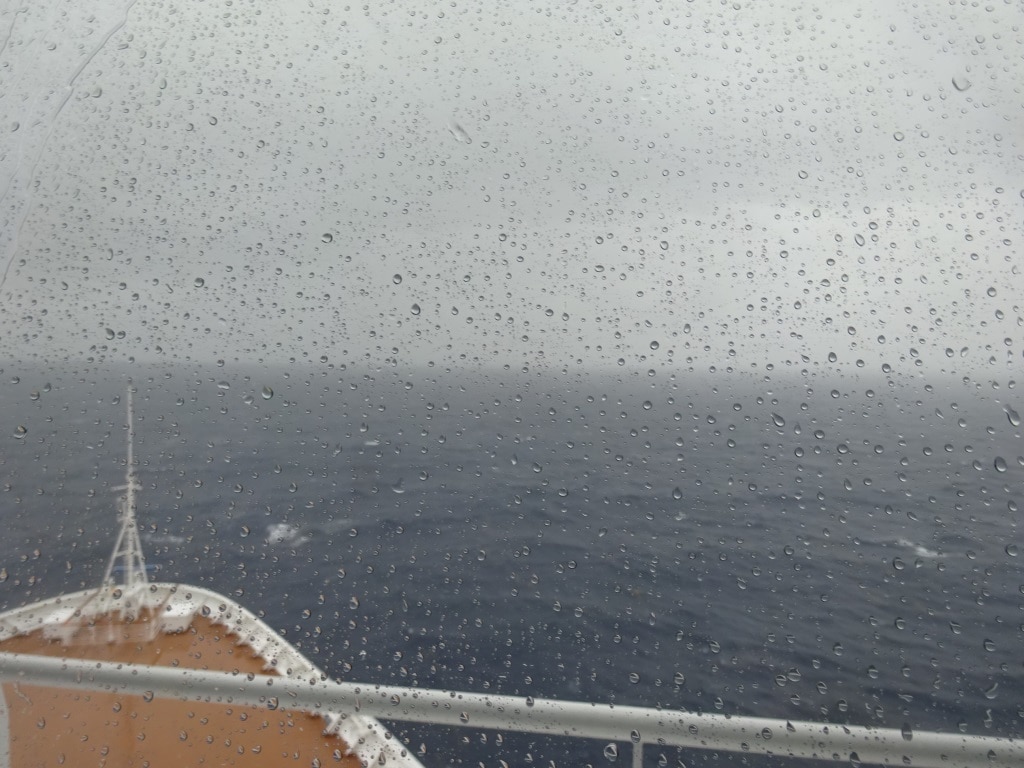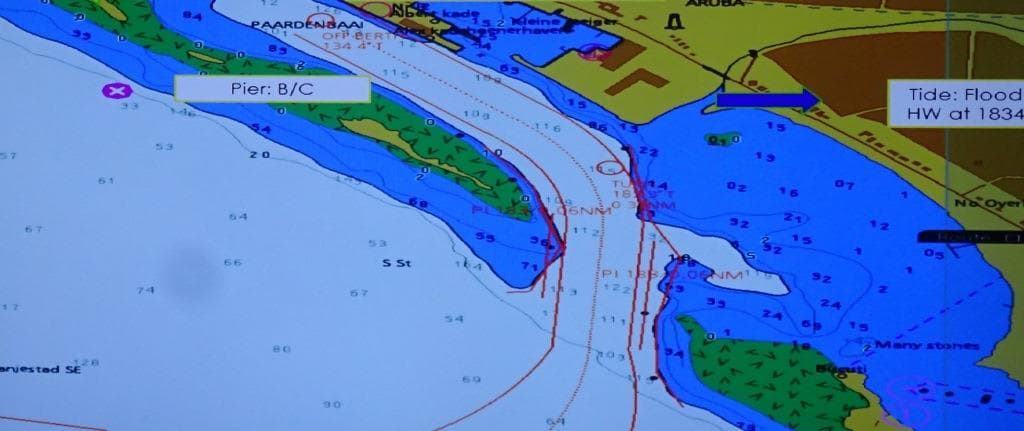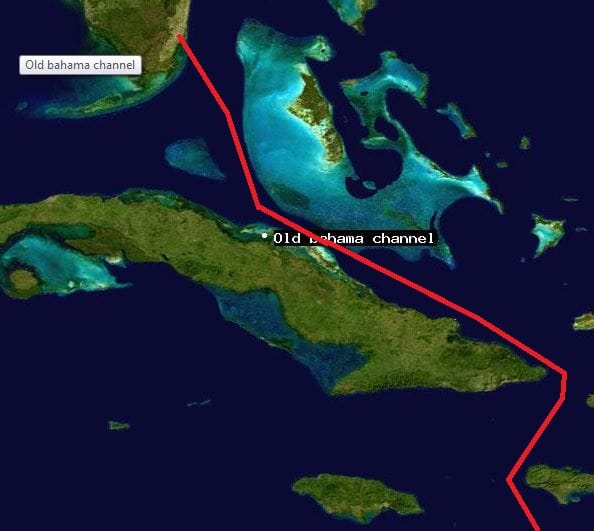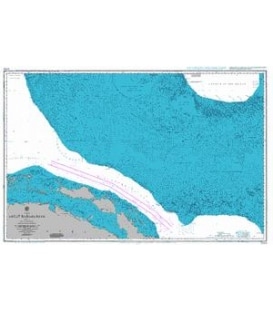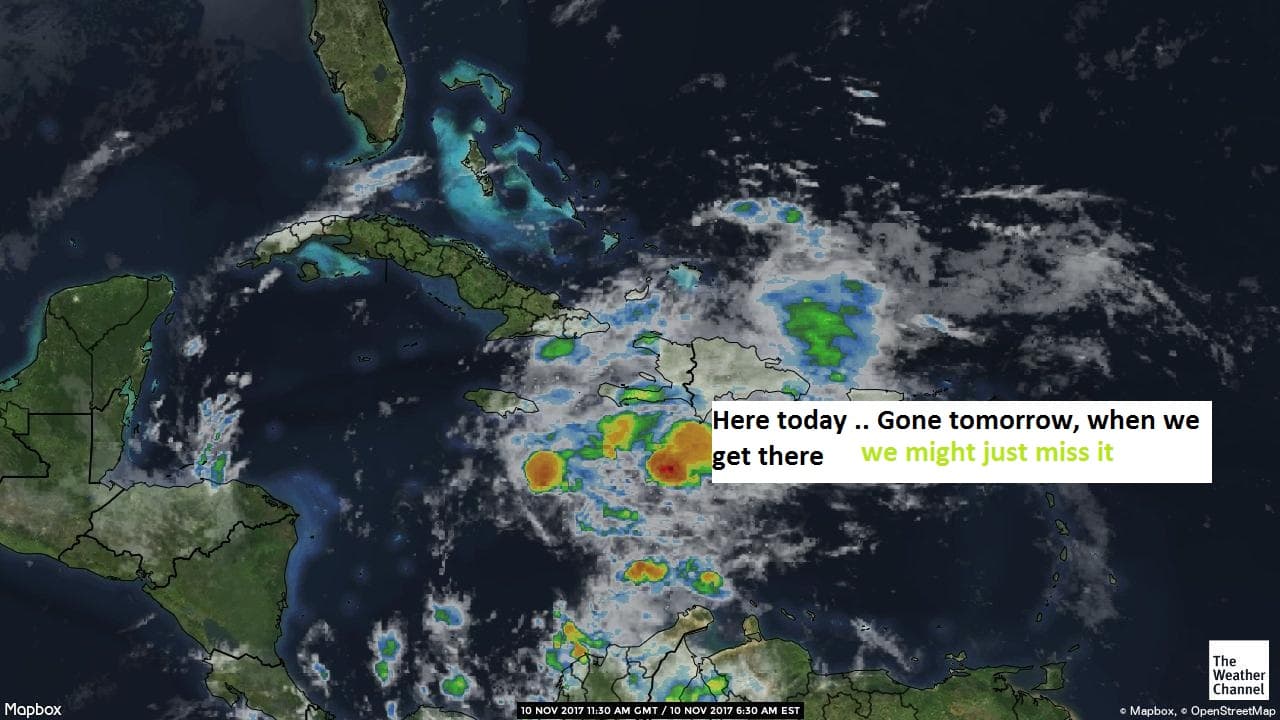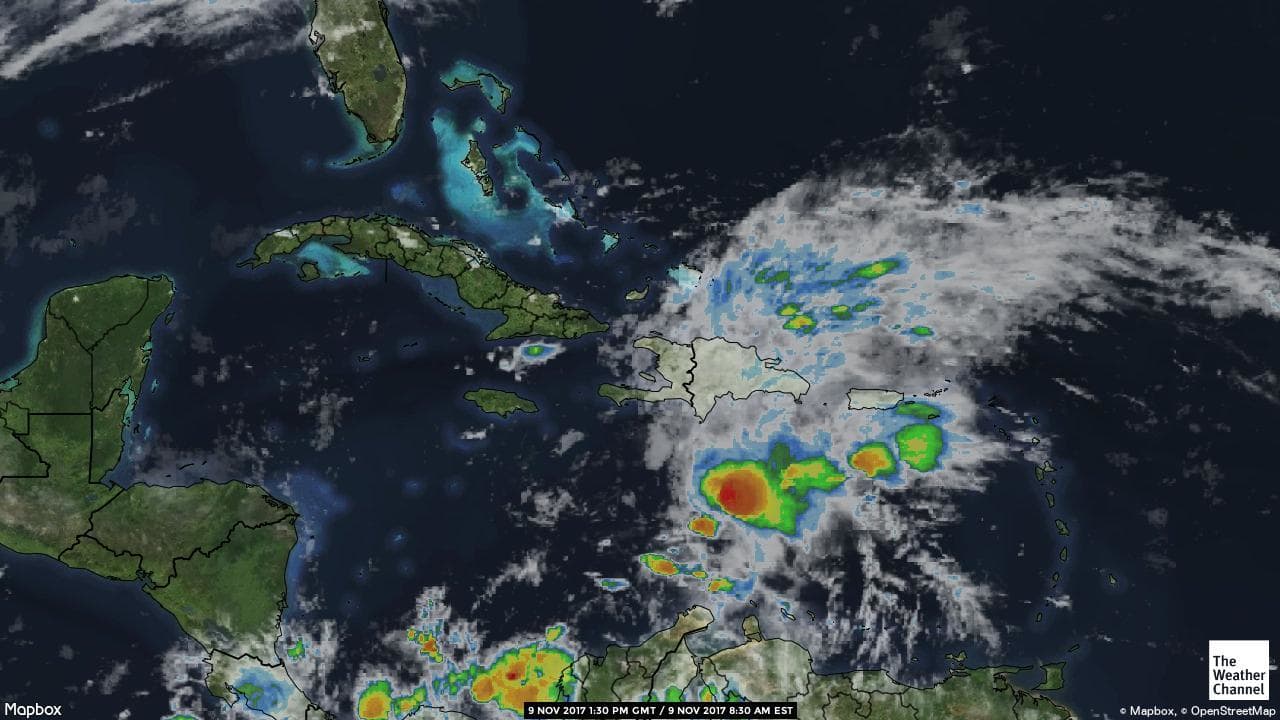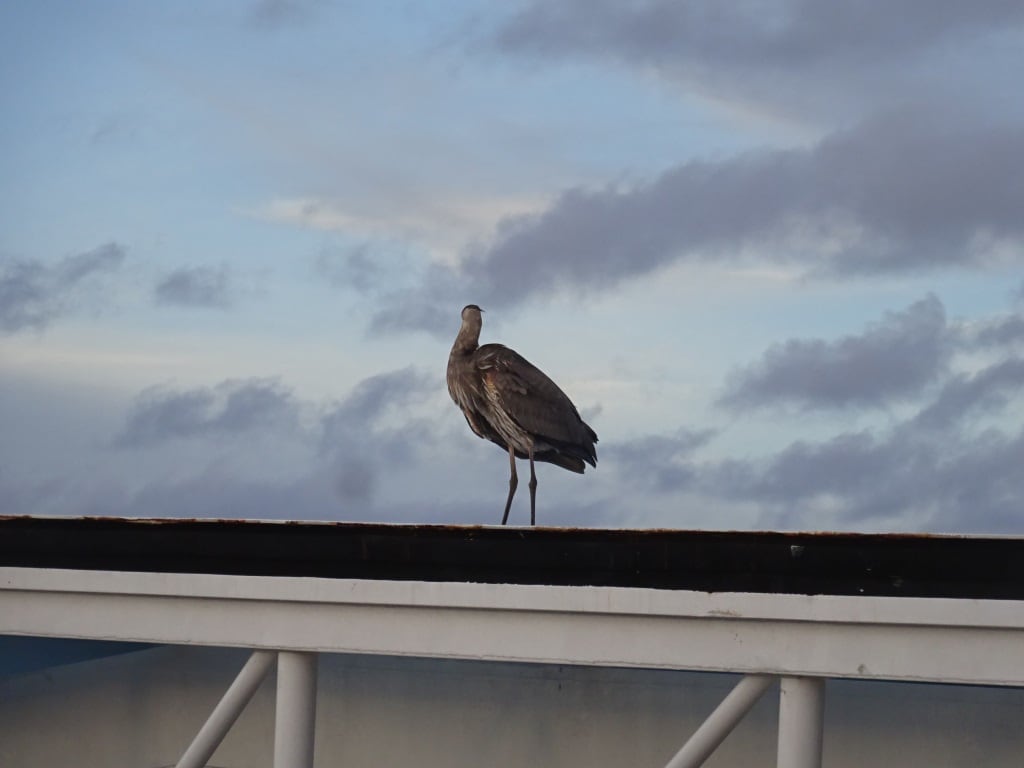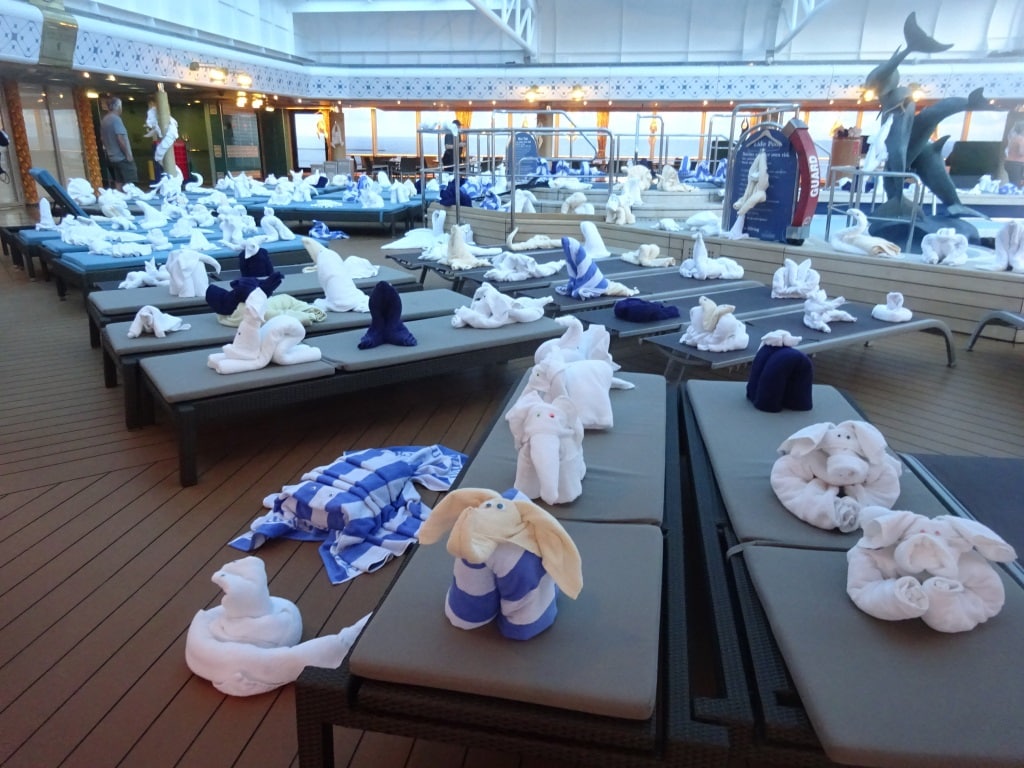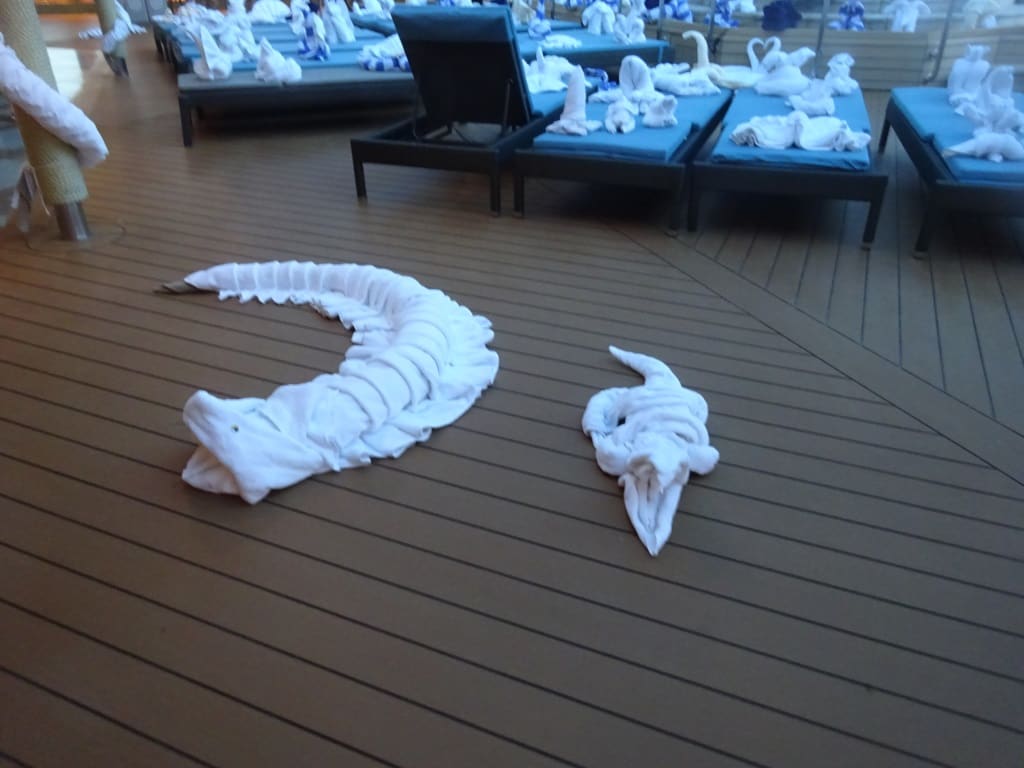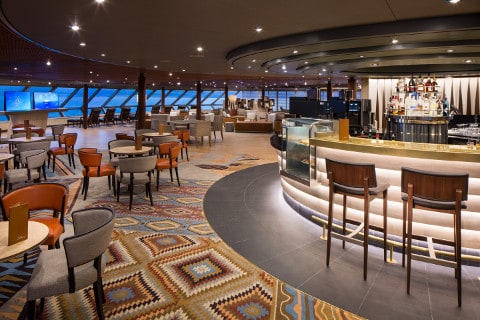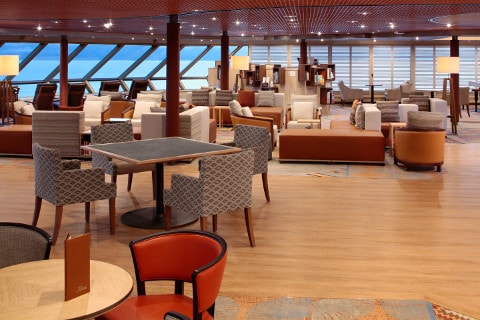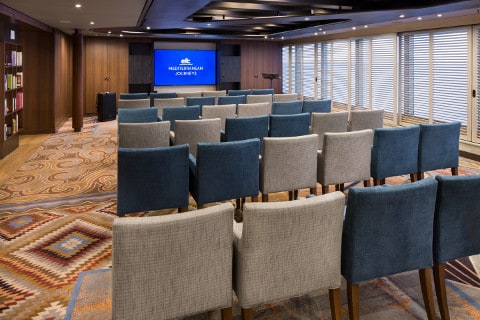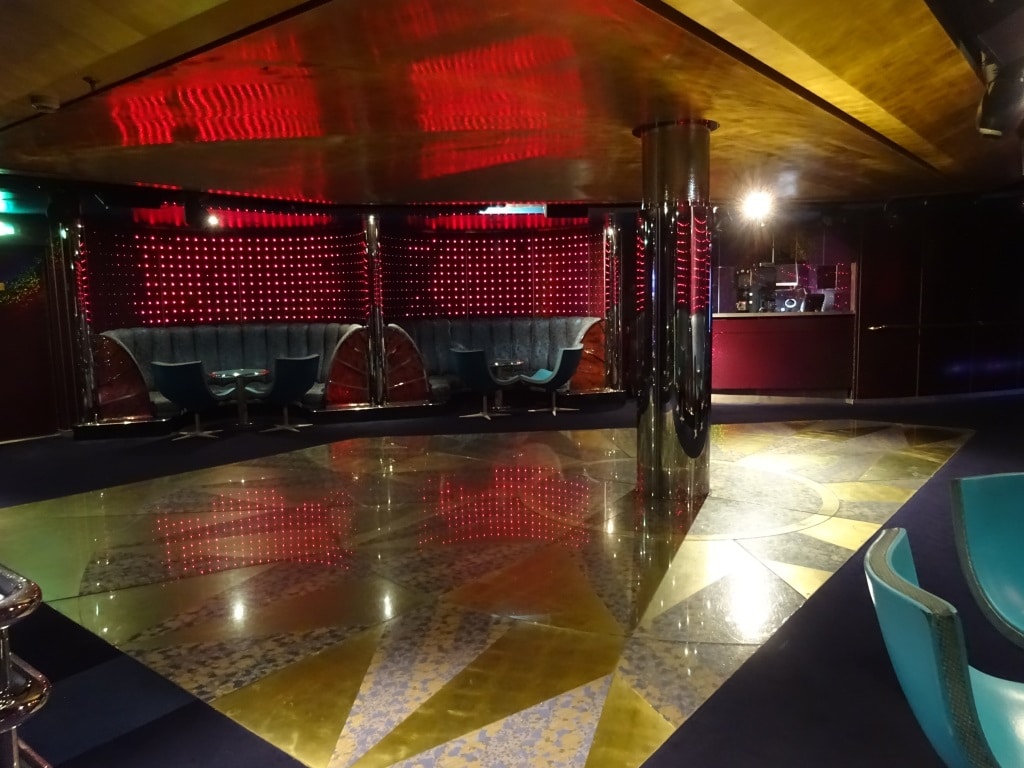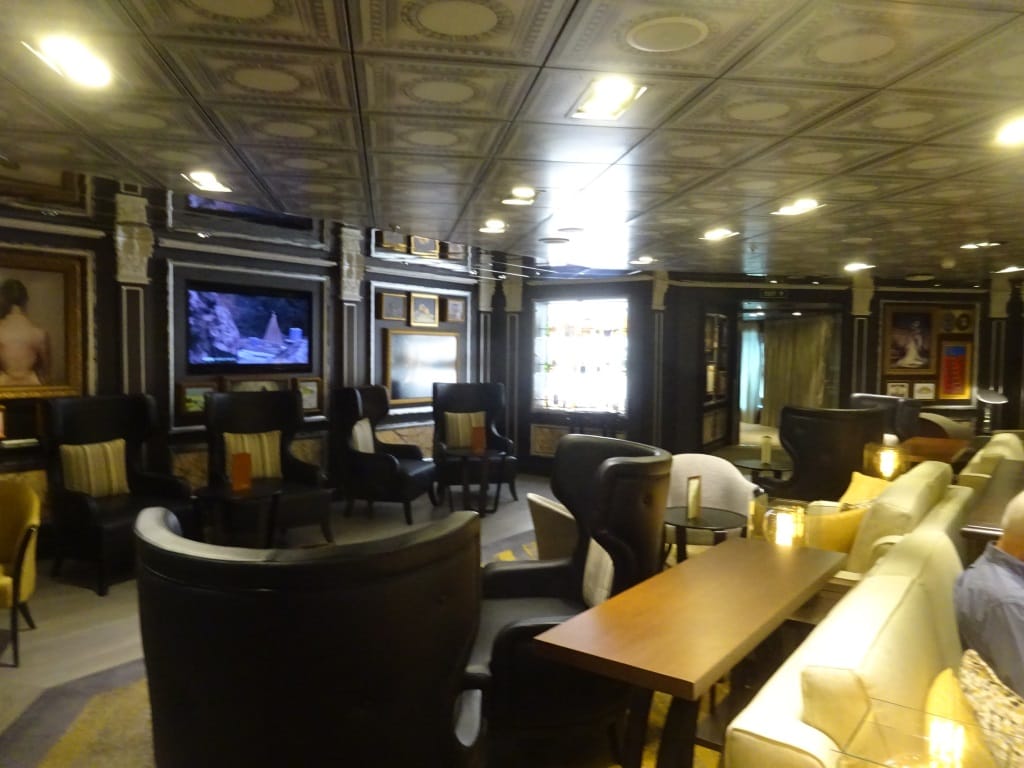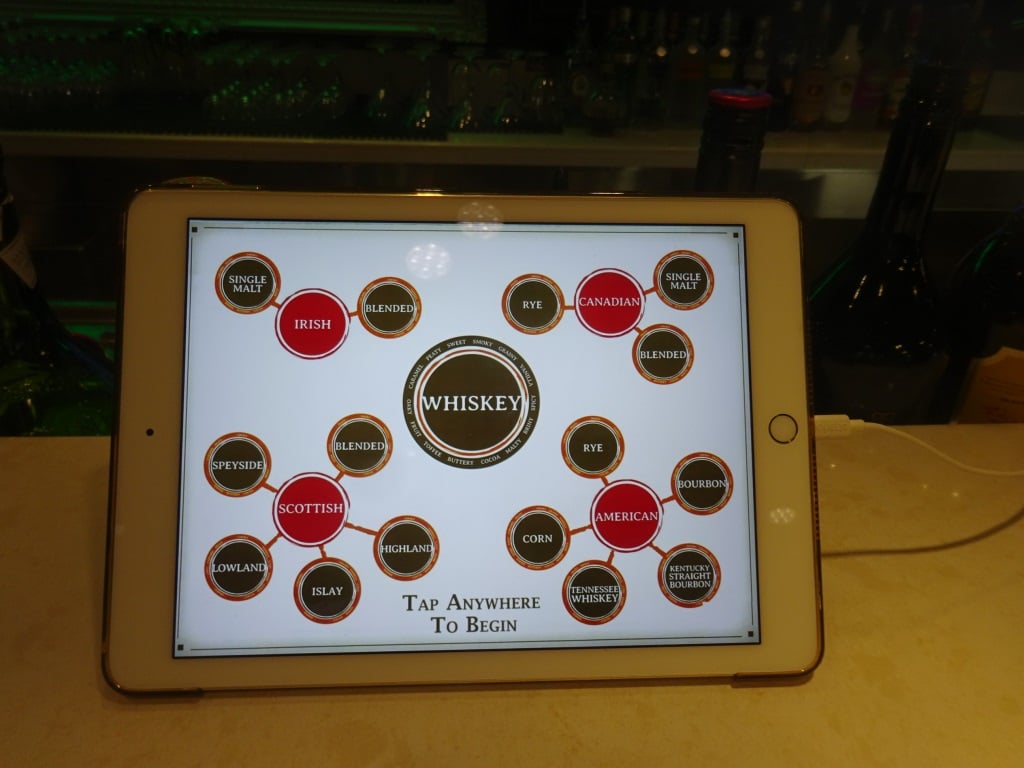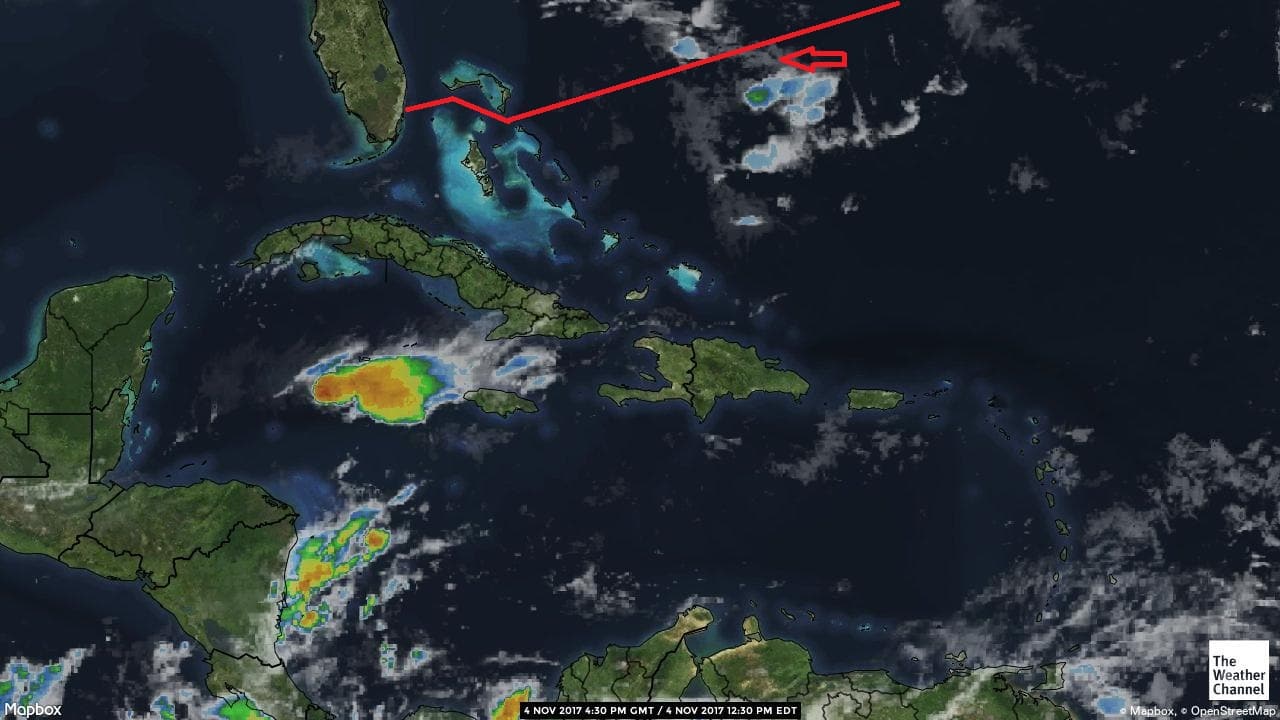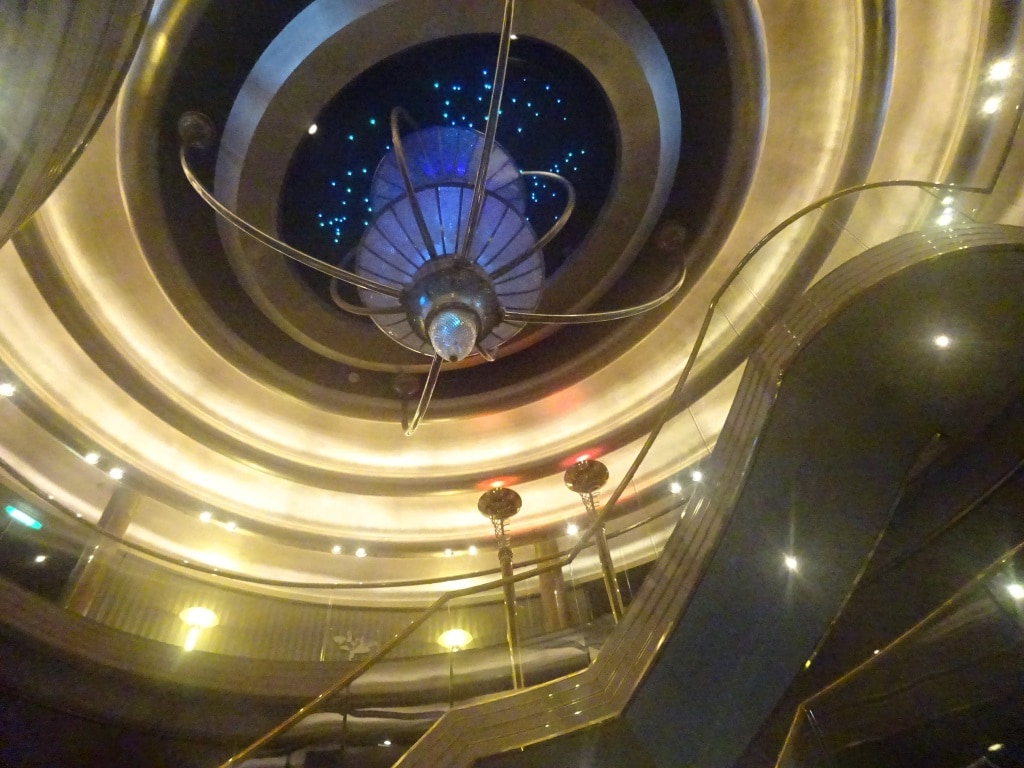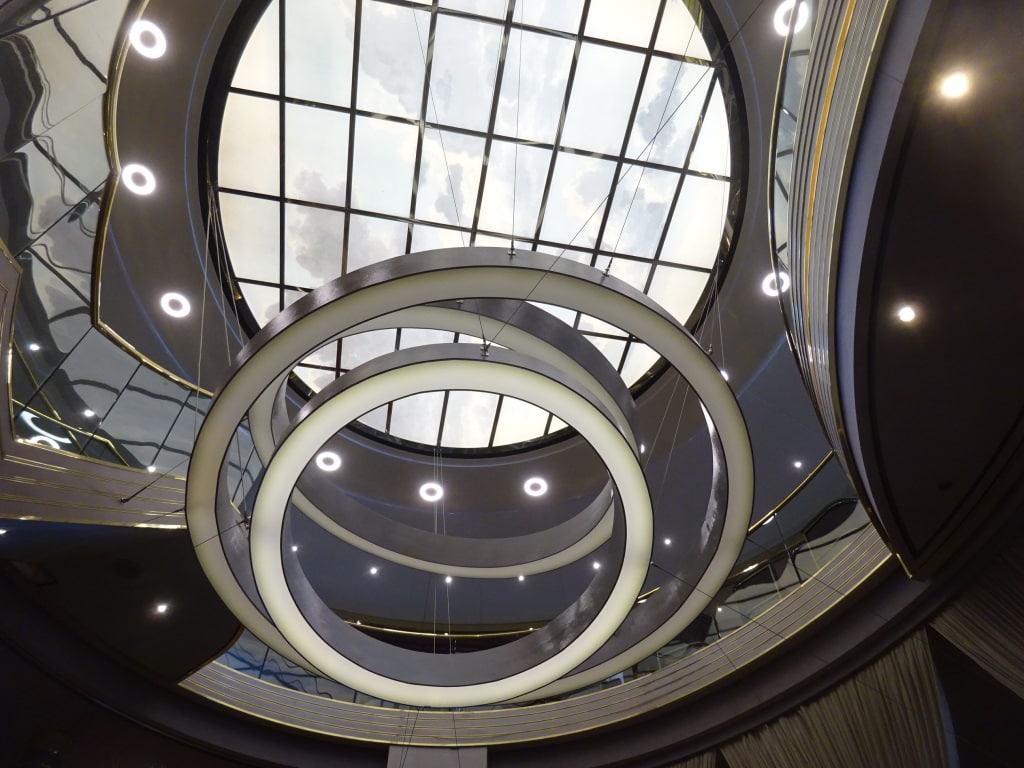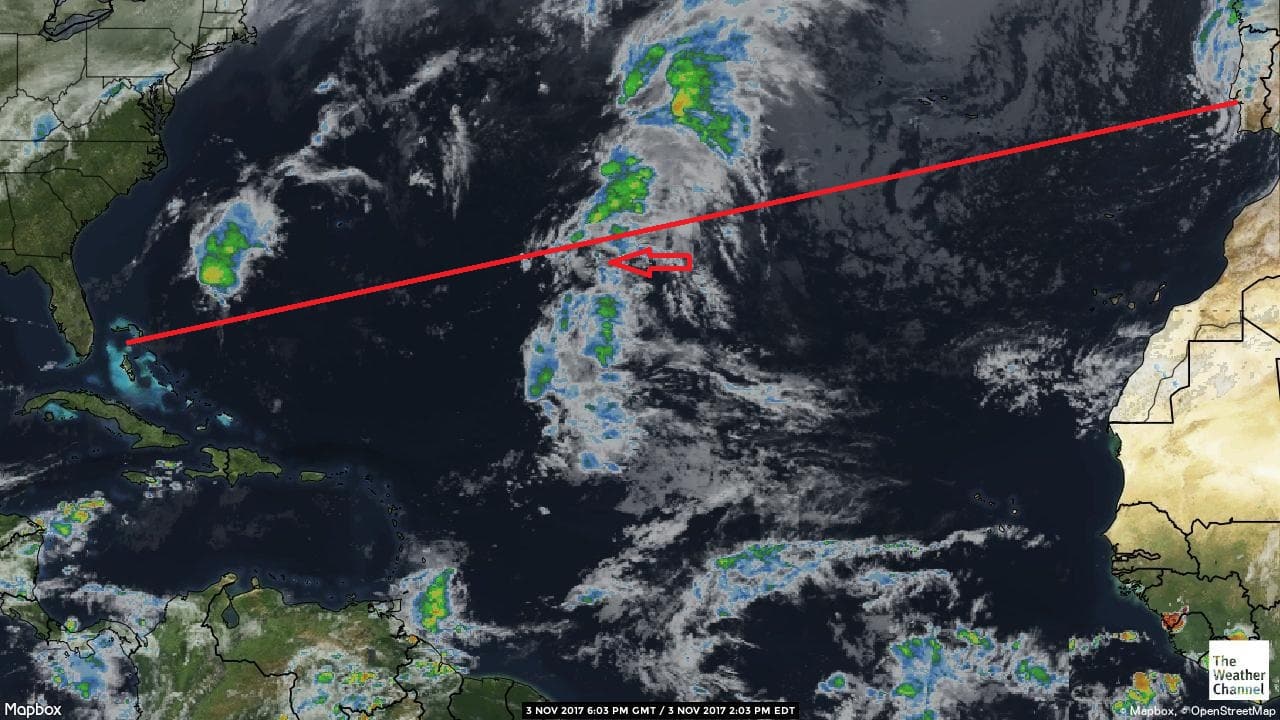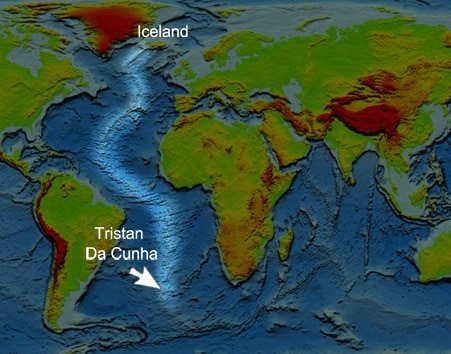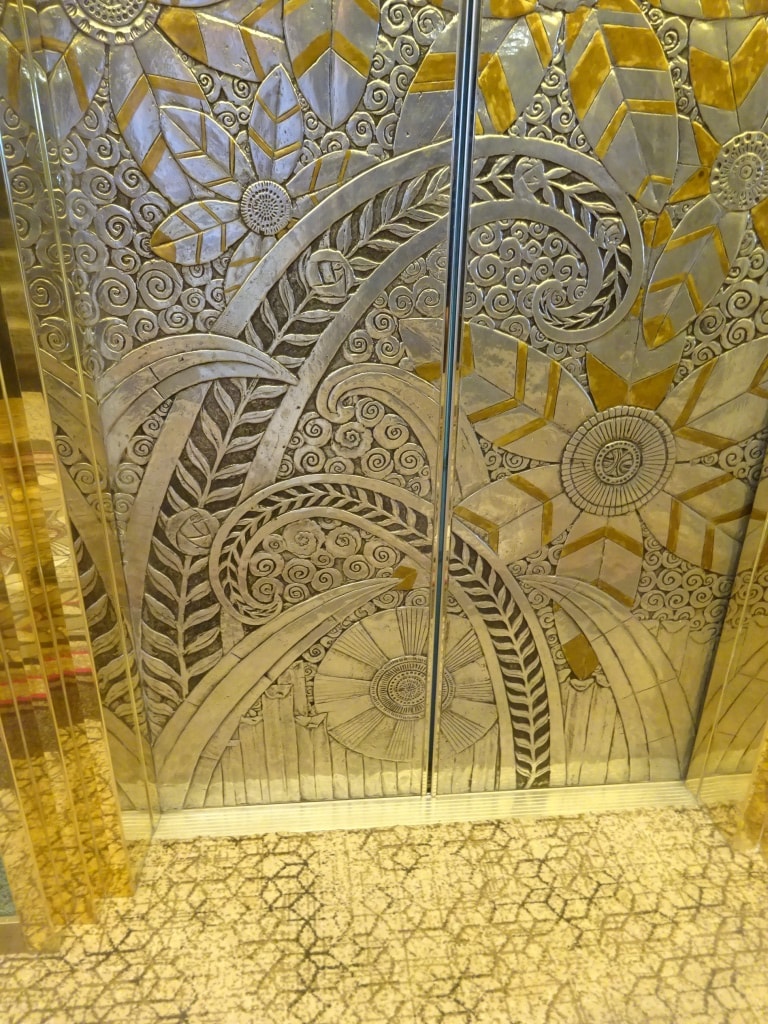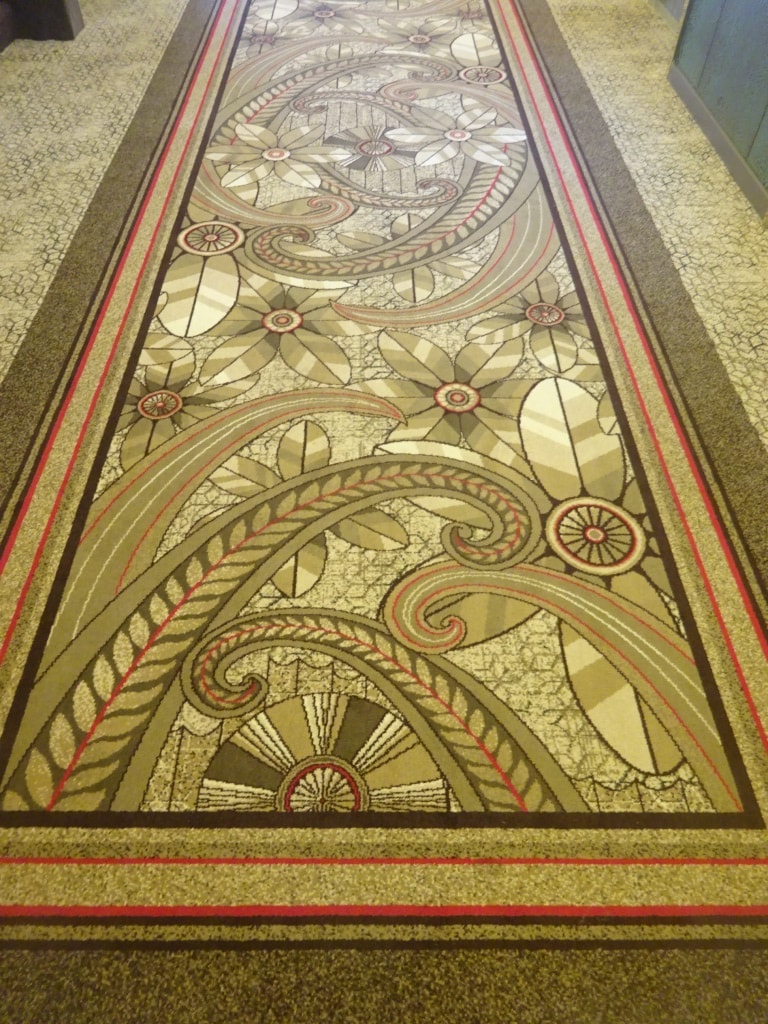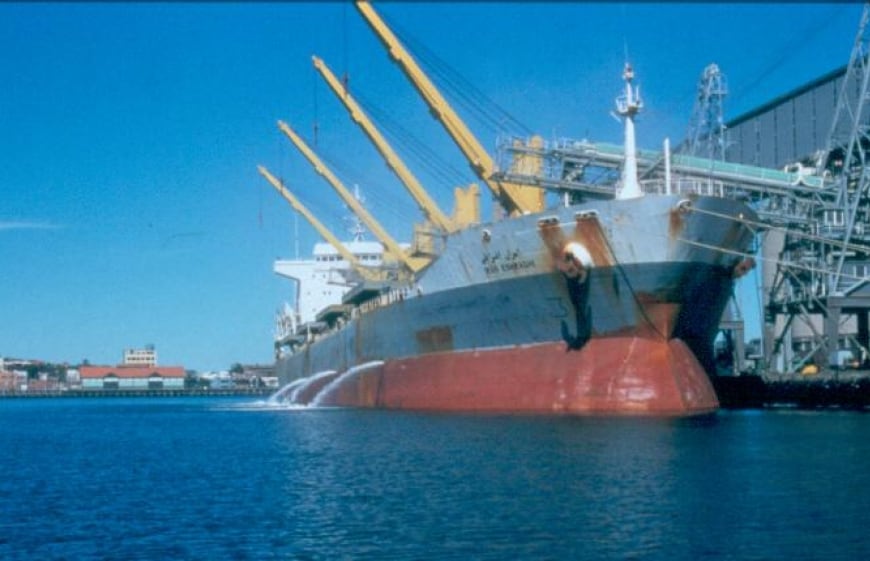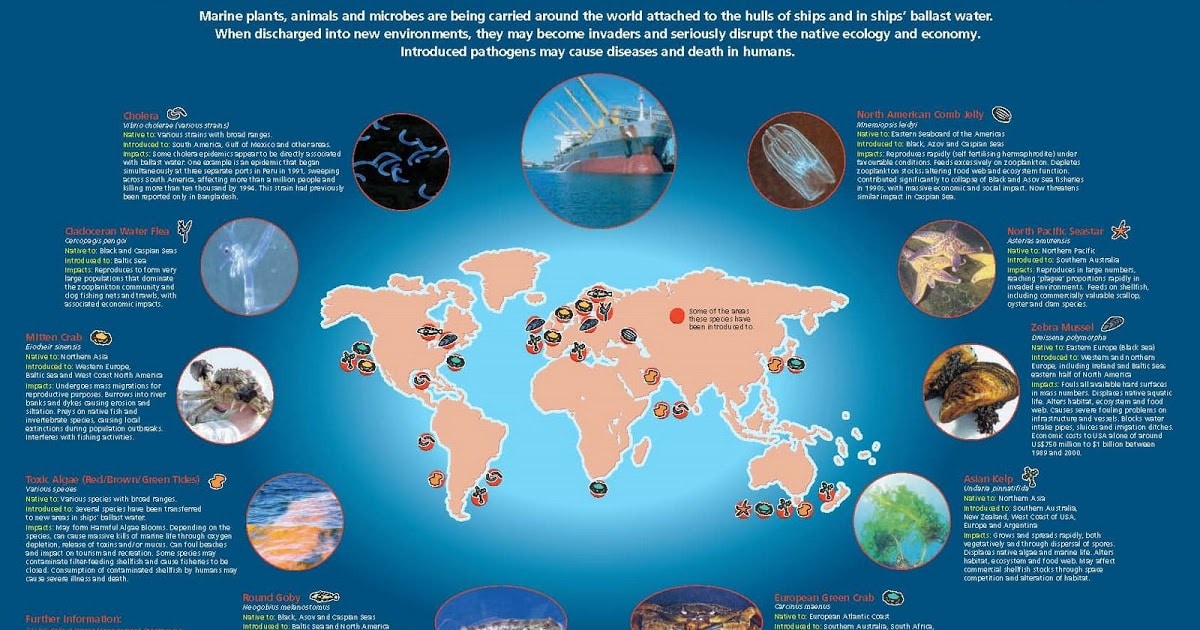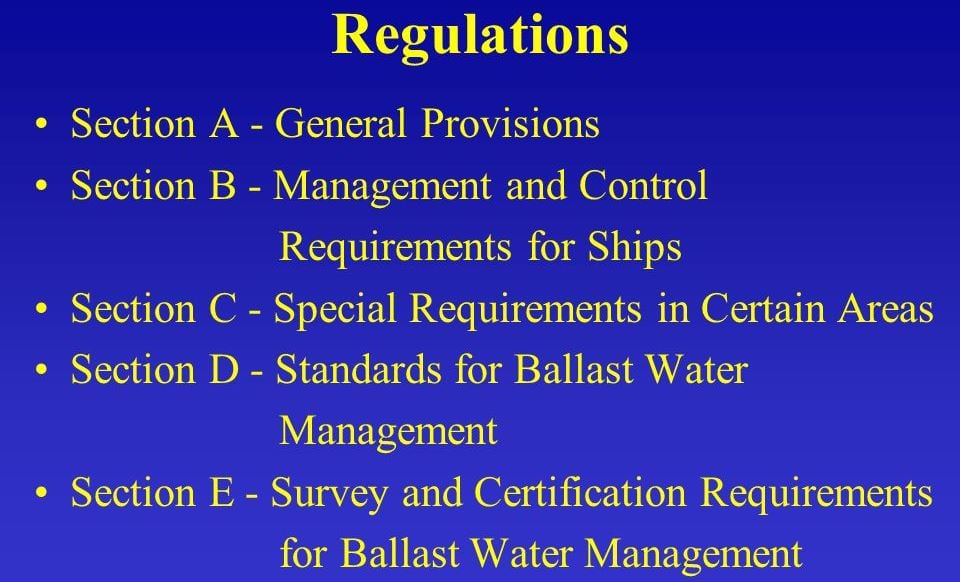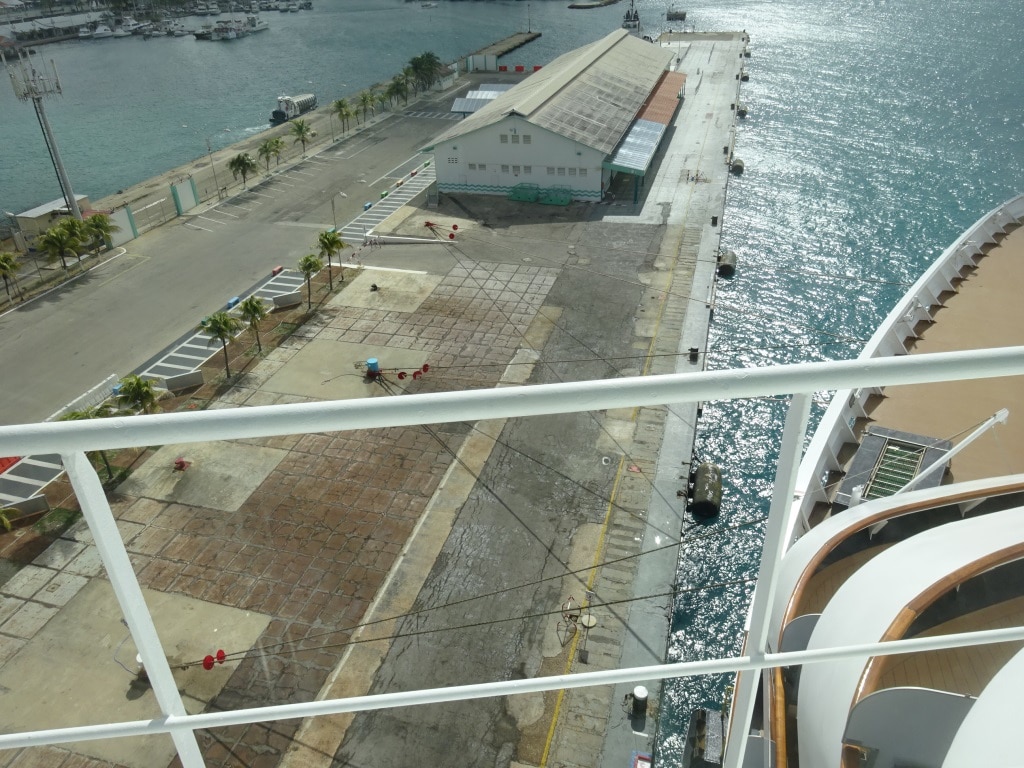
This is what we call ” a nice spread”. The ropes are on several bollards and also set in land giving a nice angle and good length to the rope.
By 07.00 hrs. in the morning we were at the Oranjestad pilot station and Aruba lay in front of us, covered in an early morning glare as we looked against the sun and as there was still a lot of moisture in the air so the light was a bit diffuse. The Freewinds was indeed in port but the Norwegian Dawn had cancelled its call and thus we were the only real cruise ship in port. (The Freewinds is run by the Scientology Church for its members only and is thus more a sort of a floating club) At the old container terminal, which is destined to become another cruise terminal, they had parked a ship specialized for the off shore industry, so we had to sail around it. But we were the only ship and thus we had the whole cruise terminal to ourselves and could park right in the middle. And that is what we like as we can then set our mooring ropes the best way possible.
Today the winds were hovering around 20 knots but I have seen days here when it gusted up to 40 knots and that is not much fun. If the ropes break, you are very quickly at the other side of the fairway and onto the reef. Maybe a good location for a new hotel but it would be doubtful if we would get permanent planning permission from the local authorities. Thus a lot of consideration is given to how many ropes we will send ashore and in what configuration they will go onto the bollards. The port is geared up to deal with this sort of wind and thus they have a number of heavy bollards set deeper inland so the ships can set breast lines (90o degree perpendicular on the ship) which offer optimum holding power against the Trade Wind which blows often full on the beam of the ship, and straight into the balconies. Not many people realize that balconies catch more wind than a flat wall. Better phrased a flat wall deflects and bounces away wind so the sustained impact is less. When wind blows into the ships balconies it blows into a lot of small boxes and there is no possibility to form a deviating current or air flow. The pressure stays or has to go out the same way as it came in. Some-where there will be a wind specialist who can explain it better and can probably even calculate it. But when we maneuver we have to deal with this “grip” that the wind holds on the balconies.
But today there were no such issues, although the navigators and quartermasters kept a close eye on the passing dark clouds, as there can always be wind gusts in them. I suppose the only happy camper about the weather yesterday was the Bo ‘sun as it washed all the salt off the decks, including in the corners where it is hard for his sailors to rinse the ship down with fresh water. So today he took the opportunity to paint the now salt free surface of the ship’s hull.
In the old days we used Bo ‘sun chairs for that, which were lowered down the side of the hull with ropes. Now we use cherry pickers because it is faster and also much safer. Those cherry pickers are operated by the sailors and rented locally at a cost between 500 and 1000 dollars a day. Before we let the sailors play with them, they receive training and for that purpose we have a traveling trainer in the company. There is more than one, they are called Fleet Safety Trainers, and they rotate through the fleet for various detailed and in-depth training’s. The gentleman currently on board is giving cherry picker training, fork lift driving, proper safety harness wearing techniques, Genie Lifts (a sort portable small lift to replace ceiling lamps and do cleaning in high spaces) and how to work safely in enclosed spaces. The sailors receive theoretical and practical training which is then completed with a multiple choice exam.
We left Aruba behind us by 17.00 hrs. after all the tired shoppers had returned, most of them sun burned and exhausted as it was very warm today and set sail for the Panama Canal. We have to get there by 05.00 hrs. to fit in the convoy.
While uploading the tentative Panama Canal schedule came in:
0500 Pilot on at Sea buoy
0700 Entering Gatun Locks
0900 Exiting Gatun Locks
1200 – 1230 Passing Gamboa (pending opposing traffic)
13.30 Entering P.Miguel Locks
14.15 Exit P.Miguel Locks
15.00 Entering Miraflores locks
16.00 Exit.
1700 Pilot off at Sea buoy
All subject to EXTREMELY much change.
